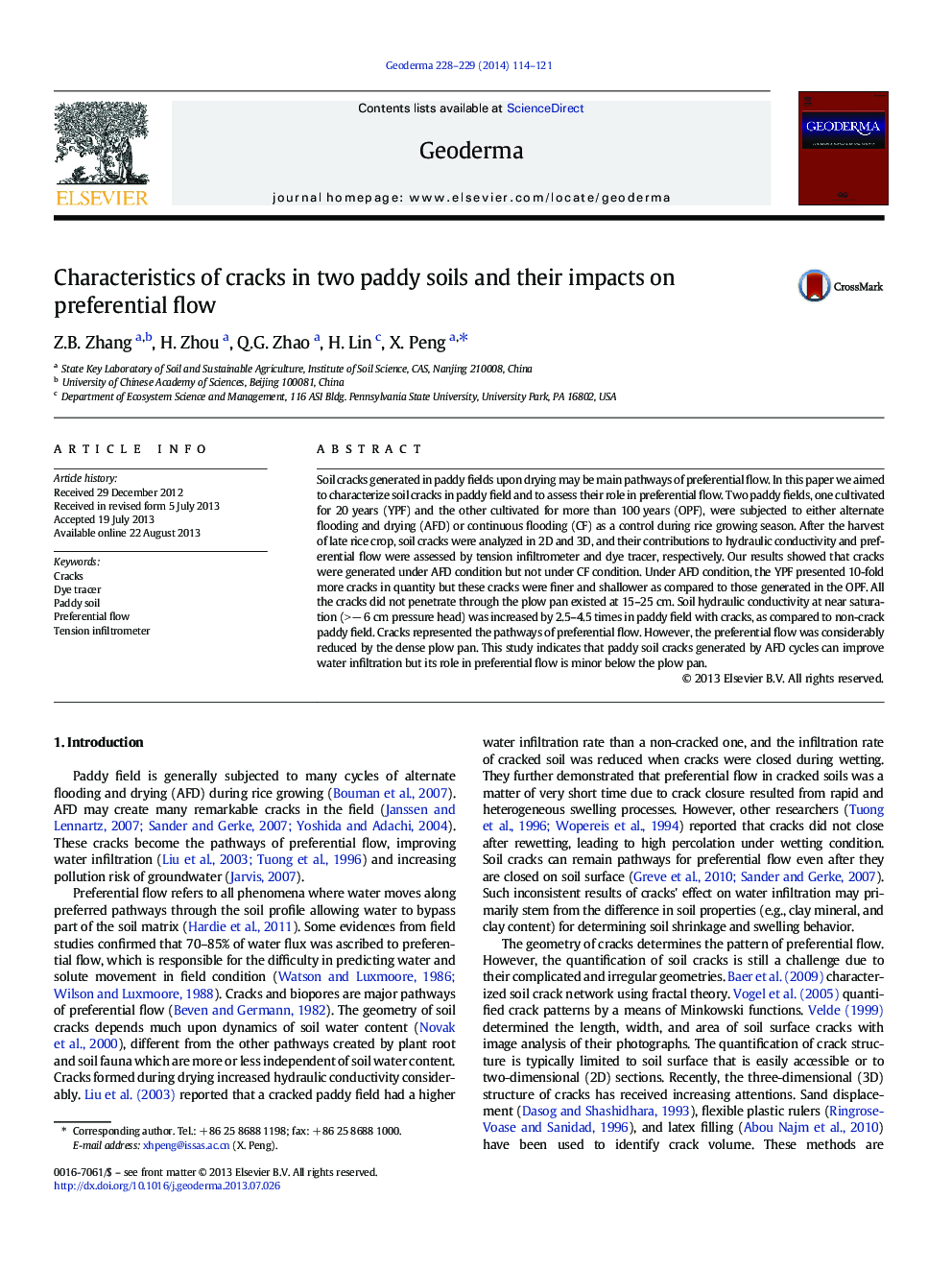| Article ID | Journal | Published Year | Pages | File Type |
|---|---|---|---|---|
| 4573358 | Geoderma | 2014 | 8 Pages |
•Two paddy fields were under alternate flooding and drying or continuous flooding.•YPD presented 10-fold more but finer and shallower cracks than those in OPD.•All the cracks did not penetrate through the plow pan.•Cracks increased water infiltration as pathways of preferential flow.•Preferential flow was considerably reduced by the dense plow pan.
Soil cracks generated in paddy fields upon drying may be main pathways of preferential flow. In this paper we aimed to characterize soil cracks in paddy field and to assess their role in preferential flow. Two paddy fields, one cultivated for 20 years (YPF) and the other cultivated for more than 100 years (OPF), were subjected to either alternate flooding and drying (AFD) or continuous flooding (CF) as a control during rice growing season. After the harvest of late rice crop, soil cracks were analyzed in 2D and 3D, and their contributions to hydraulic conductivity and preferential flow were assessed by tension infiltrometer and dye tracer, respectively. Our results showed that cracks were generated under AFD condition but not under CF condition. Under AFD condition, the YPF presented 10-fold more cracks in quantity but these cracks were finer and shallower as compared to those generated in the OPF. All the cracks did not penetrate through the plow pan existed at 15–25 cm. Soil hydraulic conductivity at near saturation (> − 6 cm pressure head) was increased by 2.5–4.5 times in paddy field with cracks, as compared to non-crack paddy field. Cracks represented the pathways of preferential flow. However, the preferential flow was considerably reduced by the dense plow pan. This study indicates that paddy soil cracks generated by AFD cycles can improve water infiltration but its role in preferential flow is minor below the plow pan.
